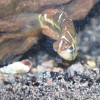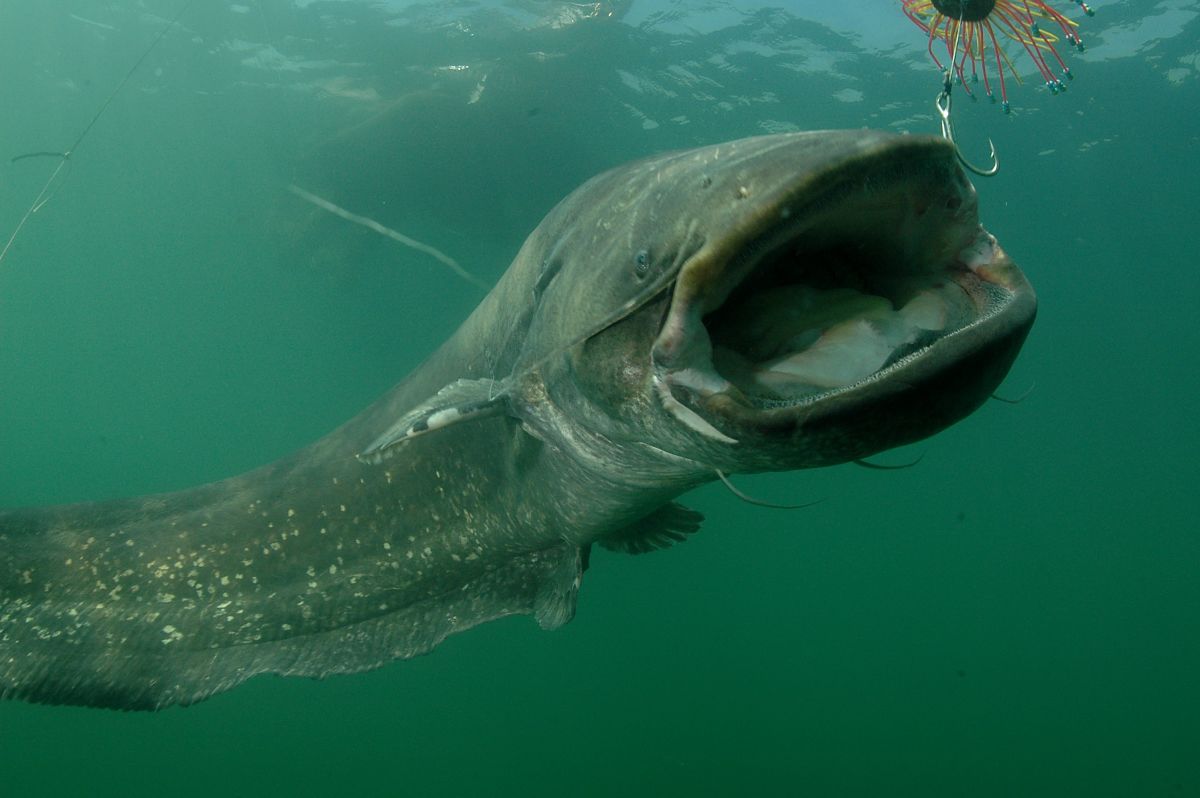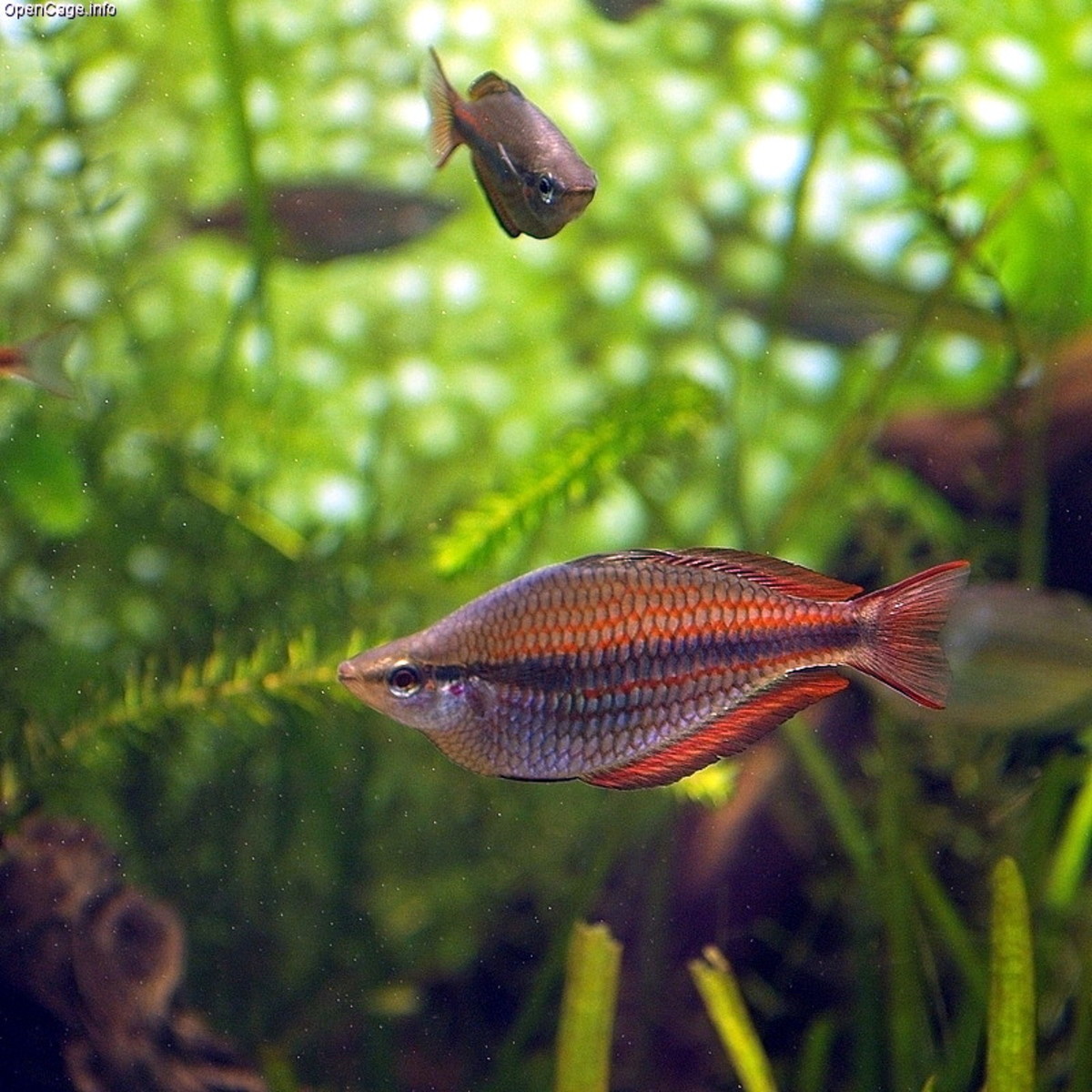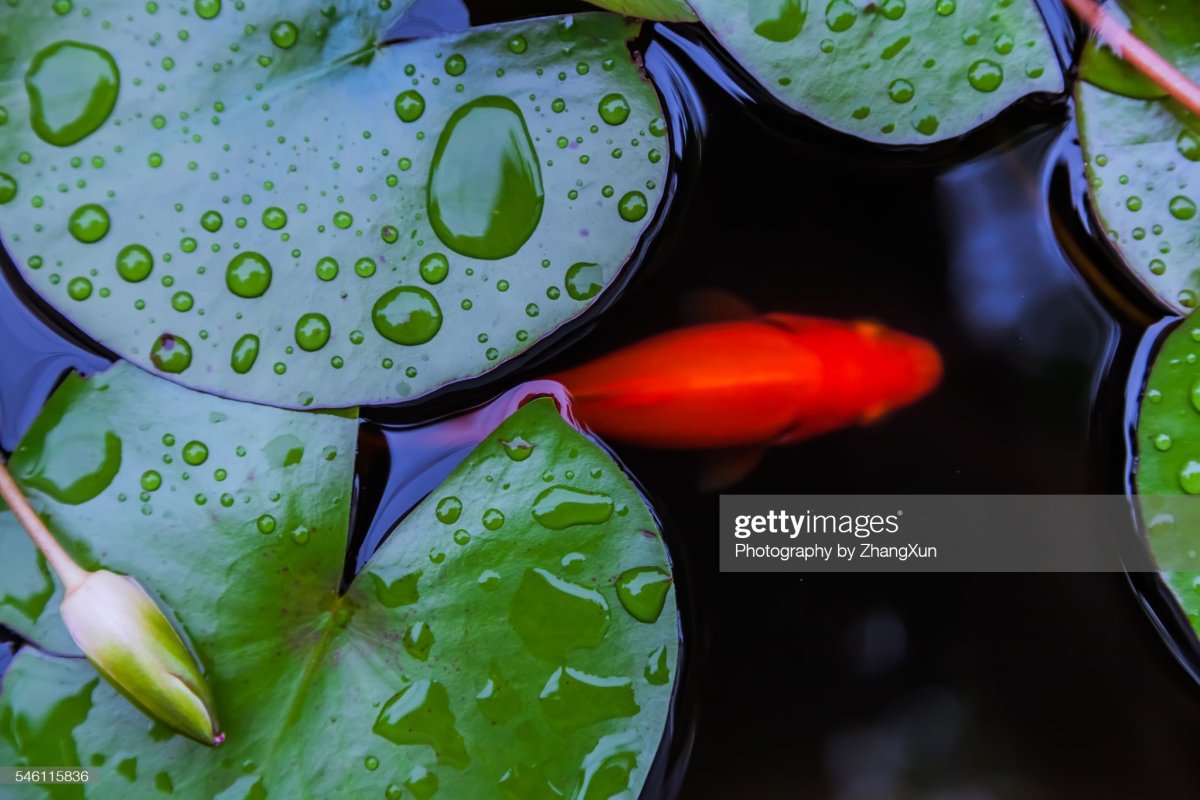Aquatics: Fish Beginners Should Avoid
Know Your Bad Beginner Fish
As a beginner to anything, the choices can seem overwhelming. You spend all your time sorting through 'what's the best brand' and 'do I really need this accessory?' When you enter the hobby of fish keeping, there's a lot of information and choices thrown at you at one time.
Most of these choices are benign. It really doesn't matter what color gravel you choose, as long as you like it.
But choosing fish is the key to success. There are lots of beautiful, hardy beginner fish that are appropriate. And then there are the cute little tank busters petshops dangle out to unsuspecting customers.
This hub is a compliment to Choosing Unpopular Beginner Fish and will go over commonly sold fish that require care above the level of a beginner (and in some cases, most seasoned) fishkeeper.
Tankbusters in a 32, 000 gallon public aquarium
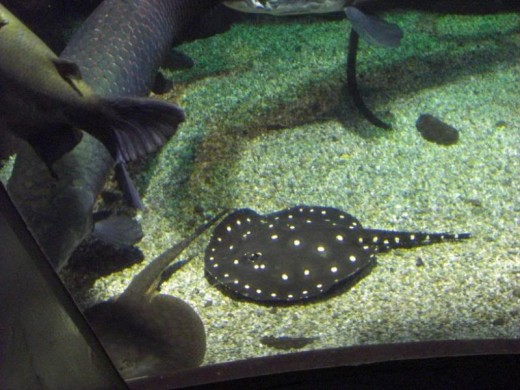
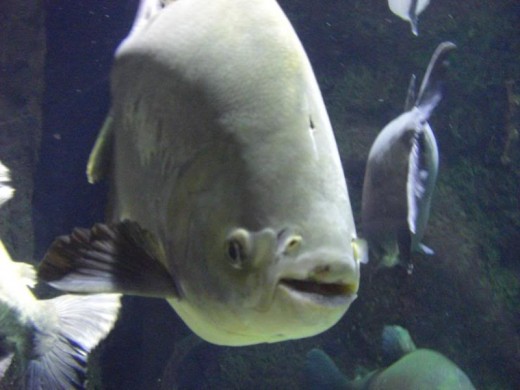
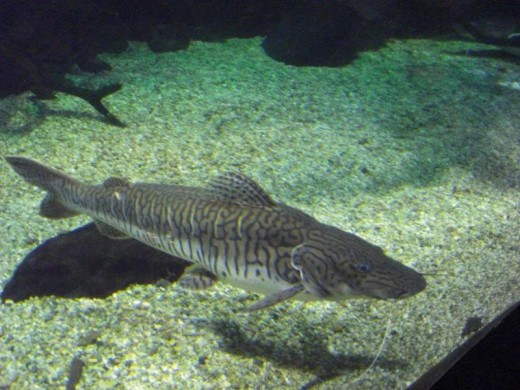
The Big
The term "tank buster" is affectionately applied to fish that get large enough to break your tank. These fish are usually sold at the cute size of 2-4 inches without the happy new fish owner knowing that they can reach 2-4 FEET. Tank busters not only get big, but they are generally skittish, prefer low lights, have special food requirements, and need massive amounts of expensive filtration. Meaning they are very expensive to house properly.
Red belly pacus (Colossoma macropomum) are very pretty when they are babies. They are bright silver with shiny scales and a bright underside. As they mature, they become a gunmetal gray. Pacus look like pirahnas because they are related to pirahnas! But Pacus are vegetarians and in the wild enjoy eating Brazilian nuts. Pacus reach a solid 2-3 feet long and can weigh up to 40 pounds. The oldest captive pacu is 43 years old.
Pacus are schooling fish, so they need company of their own kind. Unless you have a couple thousand gallon system and can house these fish for decades, pacus are not good aquarium fish. Pacus are routinely found released in local bodies of water by fisherman and public aquariums are flooded with pleas to take pacus that have outgrown their owner's tank.
If you like the way pacus look, check out red-hook silver dollars. Silver dollars are related to pacus but stay much smaller (8") and like schools. Silver dollars are also vegetarians and do well in semi-aggressive tanks with similarly sized fish.
Massive catfish such as red-tailed catfish (Phractocephalus hemioliopterus)
, shovel nose catfish (Platystoma
lima, P. luceri, Silurus lima,or Sorubim luceri), Iridescent Sharks (Pangasius hypophthalmus), and Colombian/Silver tip Sharks (Arius seemani) all have several things in common: they are cute when little, they eat anything and everything that fits in their mouth, they reach 2-4 feet, and they are extremely messy fish.
Theses "sharks" are actually freshwater catfish (with the exception of the silvertips, which are brackish!) that hail from South America. They are so big they are used as food by the indigenous population of people. Like all catfish, they will eat anything that fits (or sometimes doesn't fit) in their mouth, so tankmates are hard to find. They also require low lights, hiding places, a high-protein diet (and flakes aren't going to cut it), and high water flow to thrive.
If you like the look of shovelnoses, check out Pictus catfish. Pictus have long whiskers and attractive patterns but only reach approximately 8". If you like Irrescent sharks, look at other Pangsuis catfish, which look similar but stay smaller.
Knife fish and freshwater stingrays are also poor choices for beginners. Black ghost knives (Apteronotus albifrons) are commonly available in the trade. They are very interesting looking fish with a fused anal fin that makes them appear to float. Unfortunately, BGKs get up to 2 feet, are highly predatory, will not tolerate other knife fish, and require a high-protein diet with good water quality. There are several rays in the hobby. Rays have very similar requirements to BGKs but are even more picky! The water quality must be excellent, they require long, shallow tanks, and are venomous. Baby whales (Pollimyrus castelnaui) are another poor choice for a beginner because it is similar to the BGKs and rays, although it does not get as big.
Unfortunately, there are not any good beginner substitutes I can recommend for these fish.
Adult Kenyi
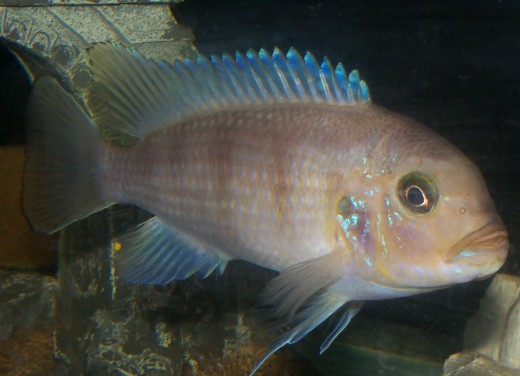
The Bad
The fish in this section have a well-deserved reputation of being nasty towards each other and tankmates. Nippy and nasty fish can take a harmonious tank and turn it into a disaster of stress and disease. Purchase with caution and research!
Tiger barbs (Puntius tetrazona) are beautiful little fish with a tan body and bold, black stripes with red fins. They are also single-finned the reason barbs have a reputation for being nippy bullies. Tiger barbs are the football players of the fishworld. They like to be physical with each other and whoever happens to stray into their playground. Fish with long, flowing fins are especially tempting, but they will nip even catfish and plecos.
The trick to keeping tiger barbs, supposedly, is to keep them in a large school of 8+. However, I have seen them in dealers tanks 50+ still chewing on their tankmates. Tiger barbs are best kept with other fast, short finned fish, such as silver dollars or giant danios. They should not be housed with angels or guppies or long-finned tetras.
Red tailed sharks (Epalzeorhynchus bicolor) and their close cousins rainbow sharks (Epalzeorhynchos frenatum) are very peaceful when they are babies. They are striking with their black, streamlined bodies and bright red fins. As they grow, they become extremely territorial and will attack and chase other fish out of their spot. Housing these fish together becomes impossible as they get older unless you have a very large tank because the dominant fish will harass and kill the weaker one.
These "sharks" do best as the only specimen in the tank, since they don't get along with each other, and do well with no other bottom dwellers. Good tankmates for red-tailed and rainbow sharks are silver dollars and tiger barbs, which are fast enough and aggressive enough to hold their own.
Chinese Algae Eaters (Gyrinocheilus aymonieri) are actually poor at eating algae. These silver-striped fish hail from Southeast Asia and reach an impressive 8" of nasty. Chinese algae eaters have been known to attach to slow moving fish and suck off their slime coat. They also do not like company of other algae eaters or catfish and will chase and harass other bottom dwellers.
Luckily, there are tons of other, suitable algae eaters for a beginner, including dwarf plecos and netrite snails.
African cichlids in general can be aggressive and territorial, but when setting up a new cichlid tank, there are two Malawi cichlids to avoid. Auratus (Melanochromis auratus) are start life yellow with horizontal black stripes, but as males grow older they turn jet black with purple stripes. They also grown to over six inches and are extremely aggressive towards tankmates. Kenyi (Pseudotropheus lombardoi) also starts life blue with vertical stripes, and males turn yellow with vertical stripes. Kenyis are also extremely aggressive and large and will dominate a tank of less aggressive cichlids.
Avoid purchasing these two fish and replace them with fish that are milder like Electric Yellow Labs and Ice Blue Zebras. These fish stay much smaller and are not nearly as aggressive but are just as colorful and interesting.
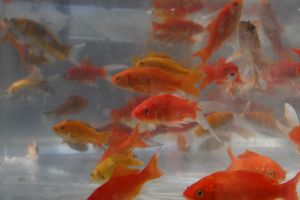
And The Ugly
These fish aren't literally ugly, since ugly is subjective anyway, but they tend to end up in ugly situations when beginners purchase them. They are generally too big and too messy and too health-prone for a standard beginner's 10 gallon tank.
Common plecos ( Hypostomus spp.) or "sucker fish" are algae-eating catfish that come from South America. They have boney armor plates that cover their body and have stronger sucker mouths to hold onto rocks and glass and scrape algae. Somehow a myth has sprung up in the hobby that every tanks needs a pleco, and these plecos will clear cloudy water, keep the gravel sparkling clean, and no algae will ever grow in the tank.
Unfortunately, common plecos reach a whooping 2 feet long, poop more than they eat, are nocturnal, and become extremely lazy as they get older. Plecos also fight other plecos and will occasionally snack on other fish if the opportunity arises. Plus, new beginners buy them for a new tank "to prevent algae" and the plecos starve to death. Dwarf plecos are good alternatives, especially rubber lip plecos and bristlenose plecos.
Oscars (Astronotus ocellatus) have earned the name "wet pet." Oscars are extremely curious, playful, and owner responsive cichlids from South America. They also grow extremely fast (1-2" a month), eat everything, destroy heaters and filters, and create massive amounts of waste. Oscars reach approximately 12-15" in the span of a year and easily outgrow any tank smaller than a 75 gallon. Tankmates are tricky with oscars because they like to eat smaller fish and bully similarly sized fish.
Owning an oscar is a lot of fun and they are a solid favorite of people who have kept them, but if you are interested in keeping an oscar, ensure you have a proper sized tank, shatterproof heaters, and are okay with having one, big fish in your aquarium. If you're not quite ready for an oscar, look into similar cichlids, such as severums, rainbow cichlids, and bolivan rams.
Dragon gobies (Gobioides broussonetti) are medieval looking fish with tiny pin-prick eyes, big jaws, and a long row of spines. They look pretty different and appealing but they are extremely hard to keep for several reasons. Dragon gobies are brackish water fish, which means they need salt in their water to stay healthy. They are also picky eaters and must live on sand or barebottom tanks because they had trouble finding and eating food on gravel. If you can manage to get your dragon goby to eat and grow, expect it to hit a good foot in length and eat all your small fish but still get picked on by bigger fish.
These fish do not ship well at all and frequently die in the stores. It is best not to purchase or attempt to keep these fish; they do not do well in the home aquarium.
Common or Comet goldfish (Carassius auratus auratus) are touted as wonderful beginner fish because they are ridiculously cheap and fairly hardy. This is not true! Common goldfish are not good beginner fish. Goldfish are domestic carp, meaning they get very large (up to a foot) and are very, very messy eaters and poopers. Goldfish do very poorly in bowls; in fact, they are one of the worst choices for bowls because they require a lot of oxygen to survive.
Single fin goldfish either require a large indoor tank, or ever better yet, deserve to be outside in a pond. If you are interested in keeping goldfish inside, remember that they require at the minimum a 55 gallon for 2-3 comets.
My Aquatic Hubs
- Aquatics: Investing in Quarantine Tanks, How and Why
Quarantine tanks are essential tools for fish keepers. Here's how you should set one up and why you should set one up for healthy, happy fish. - Aquatics: Running an aquarium. Cheap!
This hub is a quick run down of do-it-yourself aquarium tips to save money and spark creativity. - Aquatics: Setting Up a Fresh Water Aquarium. Cheap!
Cheap and easy solutions to setting up a new fish tank. - Aquatics: Low Light, Beginner Aquatium Plants
You've set up a new fish tank and you're interested in live plants but don't know where to start. This hub is a guide to easy to grow, easy to care for, hard to kill aquatic plants to satisfy your green thumb. - Aquatics: Choosing (Un)Popular Beginner Fish
A short list of hardy, colorful, peaceful fish that will delight and entertain the beginner (and veteran) fish keeper.
Helpful Links
- Bad Beginner Fish
Information on which fish beginenrs should avoid getting. - Oscar Fish Keeping and Care - Tankmates for Oscars - Breeding & Disease Info - Oscarfishlover.co
Oscarfishlover.com is dedicated to helping people care and look after the Oscar Fish cichlid. Gain valuable information and advice on tank setup, suitable tankmates, health, breeding, & general Oscar Fish care - My Goldfish Keep Dying | A Guide To Keeping Goldfish Without Killing Them
Once upon a time, fish keeping went something like this: buy a bowl, buy a fish, put fish in bowl, feed occasionally. The fish would generally die after a few weeks to a few months of this tortured existence...
